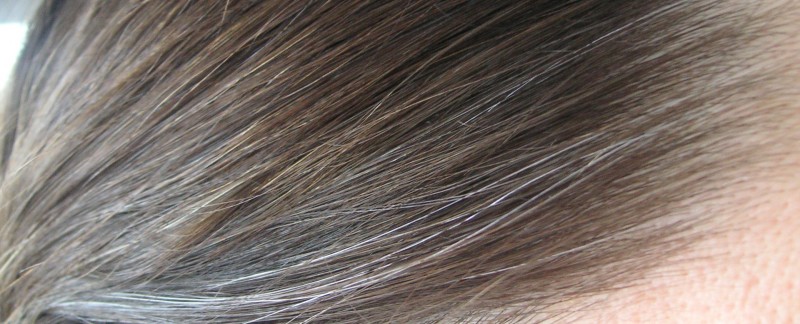Male pattern baldness
More than 95% of hair loss in men is male pattern baldness (MPB). MPB is characterized by hair receding from the lateral sides of the forehead (known as a “receding hairline”) and/or a thinning crown (balding to the area known as the ‘vertex’). Both become more pronounced until they eventually meet, leaving a horseshoe-shaped ring of hair around the back of the head.
The incidence of pattern baldness varies from population to population and is based on genetic background. Environmental factors do not seem to affect this type of baldness greatly. One large scale study in Maryborough, Victoria, Australia showed the prevalence of mid-frontal baldness increases with age and affects 73.5 percent of men and 57 percent of women aged 80 and over. A rough rule of thumb is that the incidence of baldness in males corresponds roughly to chronological age. For example, according to Medem Medical Library’s website, MPB affects roughly 40 million men in the United States. Approximately one in four men will have noticeable hair loss by age 30, and this figure increases to two in three men by age 60. In rare cases, MPB can begin as early as age 12.
The genetics of MPB are not yet fully understood. Most likely there are multiple genes that contribute towards MPB, the most important of which appears to be the Androgen Receptor gene, located on the X chromosome (inherited from the mother). It was previously believed that baldness was inherited from the maternal grandfather. While there is some basis for this belief, it is now known that both parents contribute to their offspring’s likelihood of hair loss. Most likely, inheritance involves many genes with variable penetrance.[medical citation needed]
The trigger for this type of baldness is dihydrotestosterone, a more potent form of testosterone often referred to by its acronym DHT. DHT is an androgenic hormone, body- and facial-hair growth promoter that can adversely affect the prostate as well as the hair located on the head. The mechanism by which DHT accomplishes this is not yet fully understood. In genetically prone scalps (i.e., those experiencing male or female pattern baldness), DHT initiates a process of follicular miniaturization, in which the hair follicle begins to deteriorate. As a consequence, the hair’s growth phase (anagen) is shortened, and young, unpigmented vellus hair is prevented from growing and maturing into the deeply rooted and pigmented terminal hair that makes up 90 percent of the hair on the head. In time, hair becomes thinner, and its overall volume is reduced so that it resembles fragile vellus hair or “peach fuzz” until, finally, the follicle goes dormant and ceases producing hair completely.
Nutrition
Studies have shown that poor nutrition, limited food intake, and deficiencies in certain nutrients can cause thinning. These include deficiencies of biotin, protein, zinc and poor human iron metabolism, although complete baldness is not usually seen.
- Hypervitaminosis A
- Iron deficiency or malnutrition in general
Infection
- Dissecting cellulitis
- Fungal infections (such as tinea capitis)
- Folliculitis
- Secondary syphilis
- Demodex folliculorum, a microscopic mite that feeds on the sebum produced by the sebaceous glands, denies hair essential nutrients and can cause thinning. Demodex folliculorum is not present on every scalp and is more likely to live in an excessively oily scalp environment.
Drugs
- Temporary or permanent hair loss can be caused by several medications, including those for blood pressure problems, diabetes, heart disease and cholesterol.Any that affect the body’s hormone balance can have a pronounced effect: these include the contraceptive pill, hormone replacement therapy, steroids and acnemedications.
- Some treatments used to cure mycotic infections can cause massive hair loss.
- Medications (side effects from drugs, including chemotherapy, anabolic steroids, and birth control pills)
Trauma
- Traction alopecia is most commonly found in people with ponytails or cornrows who pull on their hair with excessive force. In addition, rigorous brushing and heat styling, rough scalp massage can damage the cuticle, the hard outer casing of the hair. This causes individual strands to become weak and break off, reducing overall hair volume.
- Trichotillomania is the loss of hair caused by compulsive pulling and bending of the hairs. Onset of this disorder tends to begin around the onset of puberty and usually continues through adulthood. Due to the constant extraction of the hair roots, permanent hair loss can occur.
- Traumas such as childbirth, major surgery, poisoning, and severe stress may cause a hair loss condition known as telogen effluvium, in which a large number of hairs enter the resting phase at the same time, causing shedding and subsequent thinning. The condition also presents as a side effect of chemotherapy – while targeting dividing cancer cells, this treatment also affects hair’s growth phase with the result that almost 90% of hairs fall out soon after chemotherapy starts.
- Radiation to the scalp, as when radiotherapy is applied to the head for the treatment of certain cancers there, can cause baldness of the irradiated areas.
Pregnancy
Hair loss often follows childbirth without causing baldness. In this situation, the hair is actually thicker during pregnancy due to increased circulating oestrogens. After the baby is born, the oestrogen levels fall back to normal prepregnancy levels, and the additional hair foliage drops out. A similar situation occurs in women taking the fertility-stimulating drug clomiphene.
Other causes
- Alopecia areata is an autoimmune disorder also known as “spot baldness” that can result in hair loss ranging from just one location (Alopecia areata monolocularis) to every hair on the entire body (Alopecia areata universalis). Although thought to be caused by hair follicles becoming dormant, what triggers alopecia areata is not known. In most cases the condition corrects itself, but it can also spread to the entire scalp (alopecia totalis) or to the entire body (alopecia universalis).
- Localized or diffuse hair loss may also occur in cicatricial alopecia (lupus erythematosus, lichen plano pilaris, folliculitis decalvans, central centrifugal cicatricial alopecia, postmenopausal frontal fibrosing alopecia, etc.). Tumours and skin outgrowths also induce localized baldness (sebaceous nevus, basal cell carcinoma, squamous cell carcinoma).
- Hypothyroidism (an under-active thyroid) and the side effects of its related medications can cause hair loss, typically frontal, which is particularly associated with thinning of the outer third of the eyebrows (also seen with syphilis). Hyperthyroidism (an over-active thyroid) can also cause hair loss, which is parietal rather than frontal.
- Temporary loss of hair can occur in areas where sebaceous cysts are present for considerable duration (normally one to several weeks).
- Congenital triangular alopecia – It is a triangular, or oval in some cases, shaped patch of hair loss in the temple area of the scalp that occurs mostly in young children. The affected area mainly contains vellus hair follicles or no hair follicles at all, but it does not expand. Its causes are unknown, and although it is a permanent condition, it does not have any other effect on the affected individuals.
- Gradual thinning of hair with age is a natural condition known as involutional alopecia. This is caused by an increasing number of hair follicles switching from the growth, or anagen, phase into a resting phase, or telogen phase, so that remaining hairs become shorter and fewer in number.
- An unhealthy scalp environment can play a significant role in hair thinning by contributing to miniaturization or causing damageAir and water pollutants, environmental toxins, conventional styling products and excessive amounts of sebum have the potential to build up on the scalp. This debris can block hair follicles and cause their deterioration and consequent miniaturization of hair. It can also physically restrict hair growth or damage the hair cuticle[citation needed], leading to hair that is weakened and easily broken off before its natural lifecycle has ended.

Causes of alopecia include:
- Alopecia mucinosa
- Biotinidase deficiency
- Chronic inflammation
- Diabetes
- Lupus erythematosus
- Pseudopelade of Brocq
- Telogen effluvium
- Tufted folliculitis
